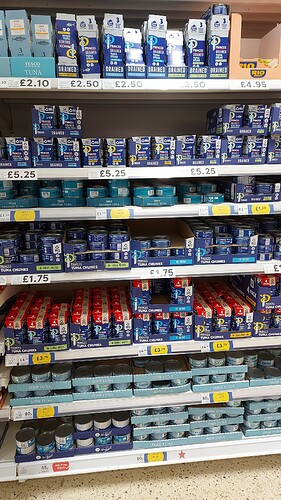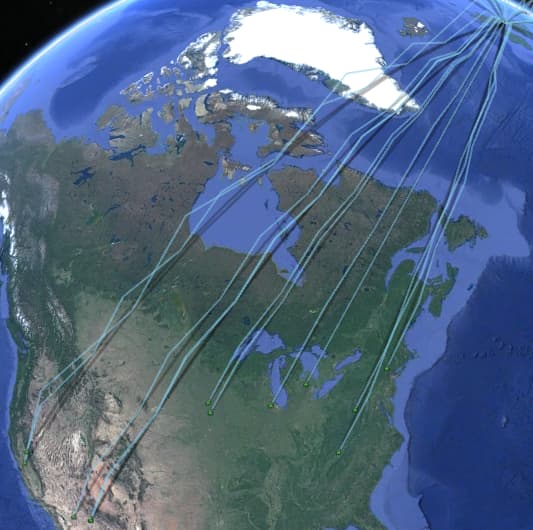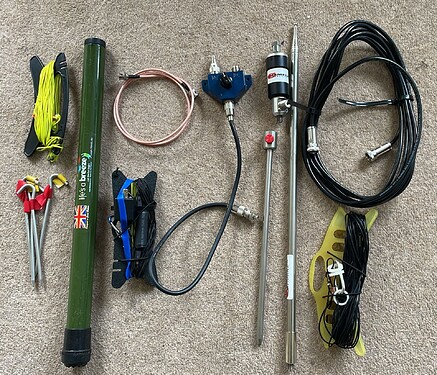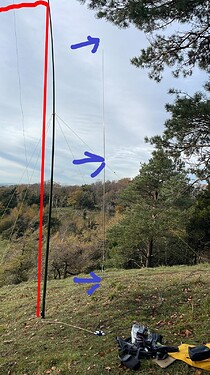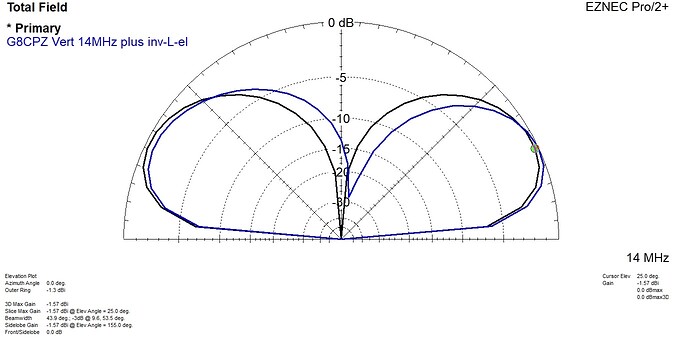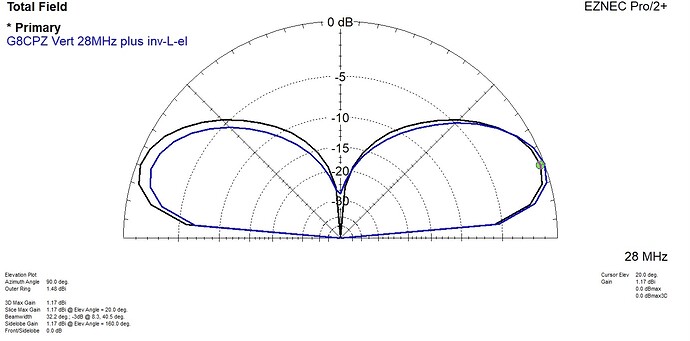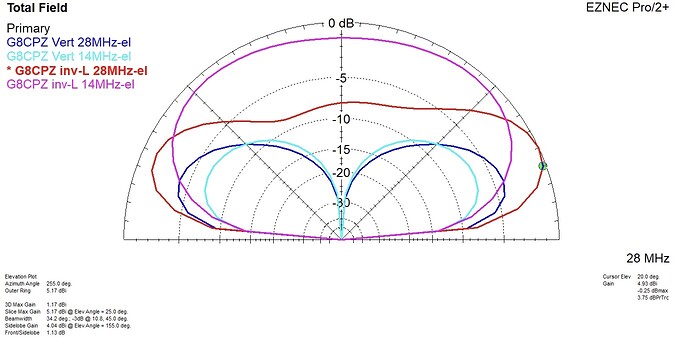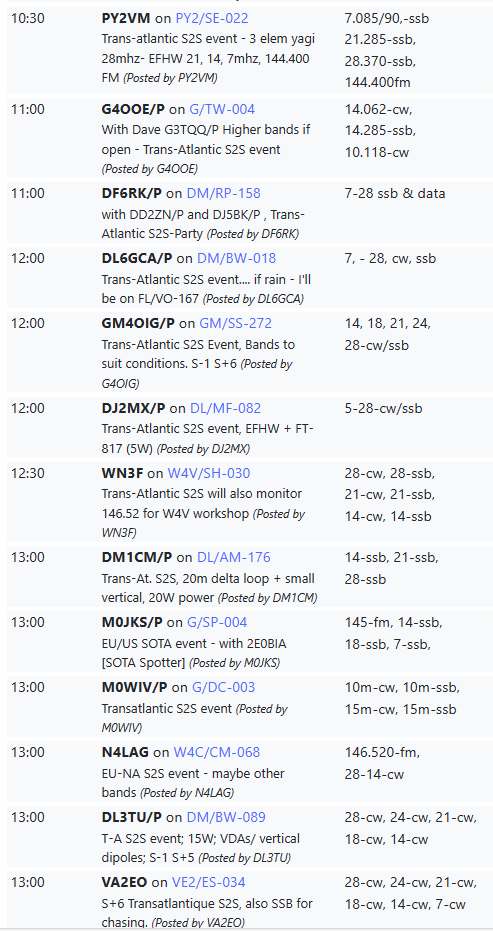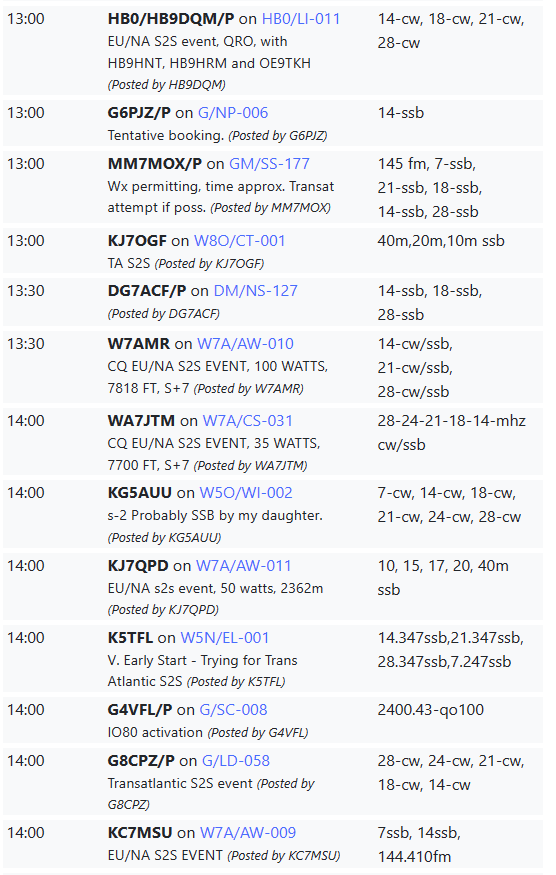Add AI and they will take over the World! An amazing collection.
That chameleon is not band specific, correct? I have a hard time believing that the LNR won’t be better given the reflected power that will occur, with some bands substantially worse than others, unless you need a band that is not available on the LNR or are running a lot more power on on the chameleon.
That’s right, it isn’t (and has a lossy broadband matching transformer). The MPAS Lite UM claims 1.8 MHz through 54.0 MHz but I use it for 30m to 10m; it’s tolerable on 40m. I like it for its robustness (in high winds), speed of deployment and smaller footprint on busy summits.
Funny you should mention that because I intend to take both antennas and an antenna switch to my target SOTA hill G/LD-058 before the TA S2S event to do a A vs B receive-only comparison specifically for 10m and 15m. I used the LNR EFHW (as a sloper) recently getting US chasers during 25 mins on 10m and 8 mins on 15m with my 10W of CW.
I’ll try it as an inverted-L for the test. G/LD-058 may be the smallest SOTA summit in England but it’s one of the very few in my region that has trees (for the far end of my inverted-L), overlooks the sea to the NW (great circle route to N. America) and the parking is only 10 minutes drive from home.
It’s the battle of the antennas this afternoon on Arnside Knott. In the right corner the contestant is the robust & tough Cha MPAS Lite vertical. In the left corner is lean but feisty LNR 40/20/10 EFHW sporting an inverted-L on a 6m pole today.
The winner will go back to the same spot Saturday afternoon for the Transatlantic S2S event.
The match location was not ideal, good DX take-off (and great sea views) to SW, W and NW but not on other bearings.
On Round 1 (10m) first to come out swinging was the EFHW landing some great punches with a clear 2-3 S-points ahead of the MPAS on most signals. This is not surprising as the 40/20/10 EFHW is optimized for 10m.
Very different on Round 2 (20m), going head-to-head, a lot of trading punches and duking it out, no clear winner, so a tie I would say. Maybe that’s because the MPAS telescoping whip (17’, 5.2m long) is optimized for a quarter wavelength on 20m and I use two wire counterpoises.
Long overs are good for comparisons: you get the chance to switch to the other antenna, use the ATU to load up on a nearby frequency and QSY back before the over is, er, over. There wasn’t enough activity on 18m and 15m to do this properly and there was no obvious winner. Not surprising as the EFHW isn’t designed for these bands and the KX2 ATU was doing its best for both antennas.
So, there was no knock-out punch and the EFHW won on points (S-points) for 10m. It will go in the rucksack for Saturday afternoon.
Red inverted-L EFHW, blue MPAS vertical
On the other hand, it shows the Cha MPAS Lite as a good allrounder for most bands, and when working 30-15m it’s done me proud many times when I needed a robust small-footprint antenna for a quicker deployment especially in very windy conditions.
Nicely done. How long was the vertical section on your inverted L? I have found that configuration to have good utility.
I am curious what everyone is setting up for antennas.
The EFT10-20-40 is the shorter of my two LNR EFHWs at 12.5m long, so ~6m (almost) vertical on the pole and ~6.5m (almost) horizontal via ~2m of cord to a tree branch.
Andy,
What was the horizontal distance between the 2 antennas?
73 tks, Heinz
About 3m. I would have preferred to space them farther apart but I was constrained by trees behind me (the top of the EFHW pole was close to a tree branch) and a popular footpath in front (I had 3 or 4 groups of curious walkers ask me what I was up to). The horizontal section of the EFHW ran in the opposite direction from the vertical.
I was interested in whether and when, how strong, roughly, the mutual influence of the two antennas is.
With EZNEC it can be seen that the radiation diagrams of the inv-L show no influence from the nearby vertical antenna at 14 and 28 MHz.
The radiation diagrams of the vertical antenna, on the other hand, show a slight influence that is insignificant in practice.
Regarding antenna gain at an elevation angle of 20 degrees, the additional gain of the inv-L (broad side of the antenna wire) is approx. 3 dB at 14 MHz and approx. 3.7 dB at 28 MHz.
Good luck on Saturday then.
Yes, it’s hard to say how much mutual induction occurs in the inactive antenna due to the active antenna ~3m away and how much de-tuning or distortion to the radiation pattern this leads to in the latter. I’m guessing it’s a second-order effect. Your modelling seems to support that. I understand an antenna’s impedance is affected by close proximity of conductive materials so each time I switched antennas I re-ran the ATU which should have helped the z-matching.
Hi Andy,
A novel way of scripting the antenna test - very amusing.
One additional question - were the comparisons on received signals or radiated signals (or both)?
Can we simply assume that if one antenna is best on receive, it will also be the better choice for radiating your signal? My experience says “not always” I’ve had antennas where they had similar performance on receive however received a several S-points different report on transmit from a remote station.
I presume the abbreviation EFHW is being used as an end-fed-half-wave here, MFJ use it for “end-fed-horizontal-wire” interestingly, so that a random wire can also be an EFHW!
73 Ed.
It was receive-only for practical reasons: transmit comparisons would involve either a) trying (in Morse) to ask hams/activators to do an A vs B antenna test or b) listening to my own signal on a N/A internet SDR using a tablet PC - which I don’t have - plus internet connection on summit. I also had limited time.
As you say there isn’t always symmetry between Tx and Rx performance (because it involves both yours and the chaser’s antenna, tx power, etc) but in my experience they are usually highly correlated when I average and compare reports sent with reports received over many QSOs on a given band.
The exercise was never intended to be a comprehensive all-bands, multi-location comparison like one might read about in a ham magazine but a bit of fun for a few hours (I hope I conveyed that) at the very spot I’ll be activating on Saturday, and was better than simply guessing which antenna would be better for 10m and 15m.
BTW: The widely accepted usage for EFHW is where the H stands for ‘half’ not ‘horizontal’.
Thanks for the extended clarification Andy,
I had presumed it was a receive-only test, for exactly the reasons you quote. It is also good to get out to a location to check out the physical lay of the land before the S2S event.
I also interpreted EFHW as End Fed Half Wave and was surprised to see MFJ trying to redefine the abbreviation to End-Fed-Horizontal-Wire.
73 Ed.
I guess there will be a mix. I’m going to a summit where there will be members of the public so I will be using a pole mounted vertical based on an M1ECC slidewinder which has 4 x 5m counterpoise wires so the footprint on plan is relatively small. I will be close by and should be able to control access to the antenna. Hopefully I won’t have too many visitors… looks like the WX might decide. ![]()
Centre loaded 5m vertical will be probably #1 choice. (See Testing a new antenna. (GM/SS-125))
Resonant on 20m so I can use it with a small PA to about 30W
It will tune with KX2 ATU no probs on 17-10m but I can only run 10W then.
10/12m 1/4wave GP where I can run the PA to about 30W.
Backup 40/30/20/17/15/12/10 EFHW limited to 10W.
Of course it all depends on the WX which is currently predicted to be light showers to light rain.
Looks like there is going to be a good turn-out (Wx permitting of course):
Good luck all - Ed DD5LP.
I won’t be alerting until friday night, I have to wait and see if I will be working or not.
I’ll be on 10-40m 10watts on FT8 and maybe JS8 if there is interest. Anyone else planning to do digital?
